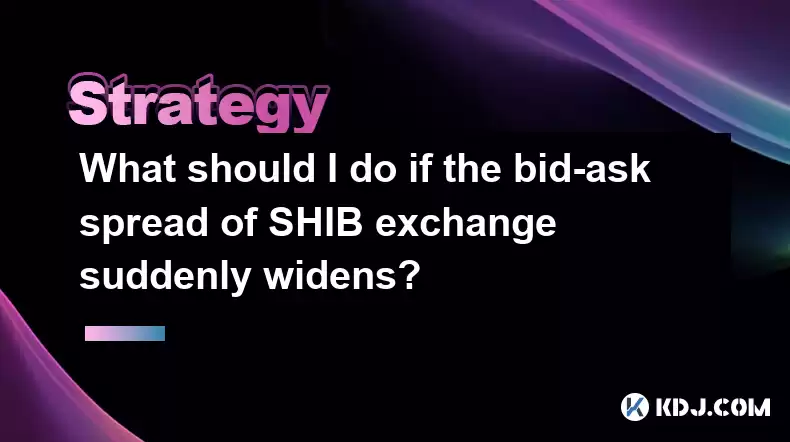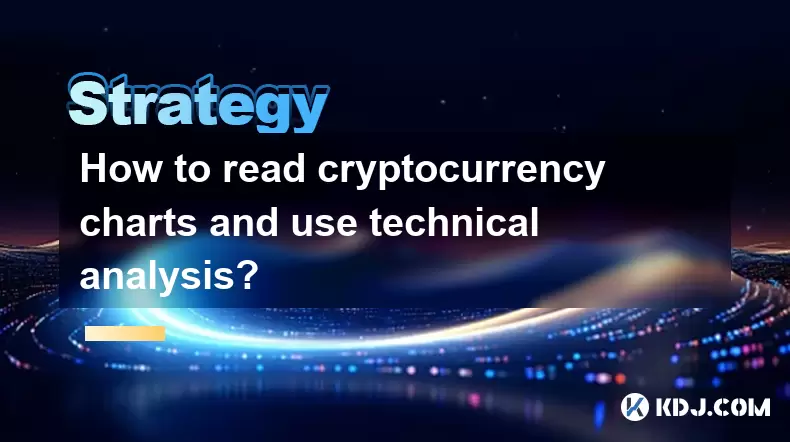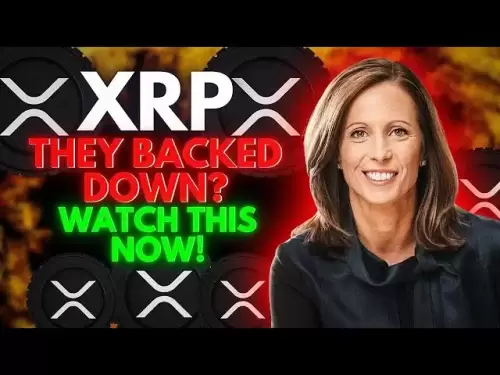-
 Bitcoin
Bitcoin $117500
2.15% -
 Ethereum
Ethereum $3911
6.19% -
 XRP
XRP $3.316
10.79% -
 Tether USDt
Tether USDt $1.000
0.01% -
 BNB
BNB $787.2
2.24% -
 Solana
Solana $175.2
4.15% -
 USDC
USDC $0.9999
0.00% -
 Dogecoin
Dogecoin $0.2225
8.40% -
 TRON
TRON $0.3383
0.28% -
 Cardano
Cardano $0.7868
6.02% -
 Stellar
Stellar $0.4382
9.34% -
 Hyperliquid
Hyperliquid $40.92
7.56% -
 Sui
Sui $3.764
7.63% -
 Chainlink
Chainlink $18.48
10.66% -
 Bitcoin Cash
Bitcoin Cash $582.1
1.88% -
 Hedera
Hedera $0.2601
6.30% -
 Avalanche
Avalanche $23.33
4.94% -
 Ethena USDe
Ethena USDe $1.001
0.02% -
 Litecoin
Litecoin $122.3
2.04% -
 UNUS SED LEO
UNUS SED LEO $8.969
-0.27% -
 Toncoin
Toncoin $3.339
0.86% -
 Shiba Inu
Shiba Inu $0.00001287
4.30% -
 Uniswap
Uniswap $10.43
7.38% -
 Polkadot
Polkadot $3.861
5.08% -
 Dai
Dai $1.000
0.02% -
 Bitget Token
Bitget Token $4.513
3.41% -
 Monero
Monero $267.7
-6.18% -
 Cronos
Cronos $0.1499
4.14% -
 Pepe
Pepe $0.00001110
5.15% -
 Aave
Aave $284.9
8.28%
What should I do if the bid-ask spread of SHIB exchange suddenly widens?
A sudden widening of SHIB's bid-ask spread can signal market volatility or liquidity issues; traders should assess the situation and adjust orders accordingly.
Apr 19, 2025 at 03:07 pm

If you're trading SHIB and notice that the bid-ask spread on the exchange suddenly widens, it can be a stressful situation. Understanding what this means and how to respond can help you make more informed decisions. The bid-ask spread is the difference between the highest price a buyer is willing to pay (bid) and the lowest price a seller is willing to accept (ask). A sudden widening of this spread can indicate various market conditions, and knowing how to navigate them is crucial.
Understanding the Bid-Ask Spread
The bid-ask spread is a fundamental concept in trading. It reflects the liquidity of the asset and the market's current state. When the spread is narrow, it suggests high liquidity and low volatility, meaning there is a small difference between what buyers are willing to pay and what sellers are willing to accept. Conversely, a wide spread indicates lower liquidity and higher volatility, which can be caused by various factors such as news events, large trades, or shifts in market sentiment.
Reasons for a Sudden Widening of the Bid-Ask Spread
A sudden widening of the bid-ask spread for SHIB can be attributed to several factors:
- Market Volatility: High volatility can cause traders to pull back, leading to fewer market makers and a wider spread.
- News and Announcements: Positive or negative news about SHIB or the broader crypto market can cause sudden shifts in buying and selling pressure.
- Liquidity Issues: If there are fewer market participants or if large orders are placed, the available liquidity can decrease, causing the spread to widen.
- Technical Issues: Problems with the exchange itself, such as system downtime or glitches, can affect the spread.
Immediate Actions to Take
When you notice a sudden widening of the SHIB bid-ask spread, here are some immediate steps you can take:
- Assess the Situation: Look at the market depth and order book to understand the current state of liquidity. Check for any recent news or announcements that might have triggered the change.
- Evaluate Your Position: Determine if you are holding a long or short position and how the widened spread might affect your trades.
- Adjust Your Orders: If you have open orders, consider adjusting them to reflect the new market conditions. You might want to cancel and re-enter at different price levels.
Strategies for Trading During a Wide Spread
Trading during a period of wide bid-ask spread requires careful consideration. Here are some strategies you can employ:
- Limit Orders: Use limit orders instead of market orders to have more control over the price at which your trades are executed. This can help you avoid slippage and get a better price.
- Wait for Stabilization: If the spread widens due to a temporary event, it might be wise to wait for the market to stabilize before making any trades.
- Diversify Your Trades: Consider diversifying your trades across different assets or exchanges to mitigate the risk associated with a wide spread on SHIB.
- Monitor Market Sentiment: Keep an eye on social media, forums, and other platforms to gauge the sentiment around SHIB and the crypto market as a whole.
Long-Term Considerations
While immediate actions are crucial, it's also important to consider the long-term implications of a wide bid-ask spread:
- Review Your Trading Strategy: A consistently wide spread might indicate that you need to adjust your trading strategy. Consider whether SHIB is still a good fit for your portfolio.
- Explore Other Exchanges: If the spread on your current exchange remains wide, it might be beneficial to explore other exchanges that offer better liquidity for SHIB.
- Stay Informed: Keep up with the latest developments in the crypto space to anticipate and react to changes in market conditions effectively.
Technical Analysis and Tools
Using technical analysis and tools can help you better understand and react to a widening bid-ask spread:
- Charting Tools: Use charting tools to analyze price movements and identify patterns that might indicate a widening spread.
- Order Book Analysis: Monitor the order book to understand the current liquidity and potential price movements.
- Volume Indicators: Look at volume indicators to see if there are significant changes in trading activity that might be affecting the spread.
Case Studies and Examples
Looking at past instances where the bid-ask spread for SHIB has widened can provide valuable insights:
- Example 1: In early 2021, SHIB experienced a sudden surge in interest due to social media hype. The bid-ask spread widened significantly as new buyers rushed in and existing holders tried to sell at higher prices.
- Example 2: During a major exchange outage in 2022, the bid-ask spread for SHIB widened as traders were unable to place or cancel orders, leading to a temporary liquidity crunch.
Frequently Asked Questions
Q: Can a wide bid-ask spread affect my trading fees?
A: Yes, a wide bid-ask spread can indirectly affect your trading fees. When you use market orders during a wide spread, you might experience slippage, which can increase the effective cost of your trades. Additionally, some exchanges might charge higher fees during periods of high volatility.
Q: How can I predict when the bid-ask spread might widen?
A: Predicting a widening bid-ask spread can be challenging, but you can monitor several indicators. Look for signs of increased volatility, upcoming news or announcements, and changes in trading volume. Additionally, keeping an eye on the order book can provide real-time insights into liquidity levels.
Q: Is it better to trade SHIB on decentralized exchanges (DEXs) or centralized exchanges (CEXs) when the spread widens?
A: The choice between DEXs and CEXs depends on various factors, including liquidity and trading fees. Generally, CEXs tend to have higher liquidity, which can result in narrower spreads. However, during times of high volatility, DEXs might offer more stability and lower fees. It's important to compare the spreads and fees on both types of exchanges before making a decision.
Q: How can I use stop-loss orders effectively during a wide bid-ask spread?
A: During a wide bid-ask spread, stop-loss orders can be tricky to manage. To use them effectively, consider setting your stop-loss orders at levels that account for the wider spread to avoid being stopped out prematurely. Additionally, you might want to use trailing stop-loss orders to lock in profits while allowing for some price movement.
Disclaimer:info@kdj.com
The information provided is not trading advice. kdj.com does not assume any responsibility for any investments made based on the information provided in this article. Cryptocurrencies are highly volatile and it is highly recommended that you invest with caution after thorough research!
If you believe that the content used on this website infringes your copyright, please contact us immediately (info@kdj.com) and we will delete it promptly.
- Stablecoins, Hong Kong, and On-Chain Finance: Navigating the Regulatory Maze
- 2025-08-08 12:30:12
- Tron's Sell-Off Spurs Altcoin Shift: What's Next for TRX?
- 2025-08-08 08:30:12
- Euler, DeFi, and Coinbase: A New York Minute on the Latest Buzz
- 2025-08-08 12:30:12
- RUVI Presale: Is the Growth Potential Real?
- 2025-08-08 09:10:12
- Sleep Token's US Takeover: Thornhill Rides the 'Even In Arcadia' Wave
- 2025-08-08 08:30:12
- FTT Token's Wild Ride: Creditor Repayments vs. Market Drop - A New Yorker's Take
- 2025-08-08 07:10:12
Related knowledge

How to read cryptocurrency charts and use technical analysis?
Aug 08,2025 at 11:08am
Understanding the Basics of Cryptocurrency ChartsCryptocurrency charts are graphical representations of price movements over time. These charts are es...

How to avoid common crypto investment mistakes?
Jul 13,2025 at 01:35am
Understanding the Risks of Crypto InvestmentInvesting in cryptocurrency can be highly rewarding, but it also comes with significant risks. One of the ...

What is a long-short crypto strategy?
Jul 15,2025 at 10:56am
Understanding the Basics of a Long-Short Crypto StrategyA long-short crypto strategy is an investment approach where traders simultaneously take long ...

What is a long-short crypto strategy?
Jul 11,2025 at 01:28pm
Understanding the Basics of Long-Short Crypto StrategyA long-short crypto strategy is an investment approach where traders take both long and short po...

How to use the RSI indicator for crypto?
Jul 12,2025 at 03:56pm
Understanding the RSI Indicator in Cryptocurrency TradingThe Relative Strength Index (RSI) is a momentum oscillator used to measure the speed and chan...

Is copy trading a good strategy for crypto beginners?
Jul 12,2025 at 08:28am
Understanding Copy Trading in the Cryptocurrency MarketCopy trading is a strategy where novice traders replicate the trades of experienced investors a...

How to read cryptocurrency charts and use technical analysis?
Aug 08,2025 at 11:08am
Understanding the Basics of Cryptocurrency ChartsCryptocurrency charts are graphical representations of price movements over time. These charts are es...

How to avoid common crypto investment mistakes?
Jul 13,2025 at 01:35am
Understanding the Risks of Crypto InvestmentInvesting in cryptocurrency can be highly rewarding, but it also comes with significant risks. One of the ...

What is a long-short crypto strategy?
Jul 15,2025 at 10:56am
Understanding the Basics of a Long-Short Crypto StrategyA long-short crypto strategy is an investment approach where traders simultaneously take long ...

What is a long-short crypto strategy?
Jul 11,2025 at 01:28pm
Understanding the Basics of Long-Short Crypto StrategyA long-short crypto strategy is an investment approach where traders take both long and short po...

How to use the RSI indicator for crypto?
Jul 12,2025 at 03:56pm
Understanding the RSI Indicator in Cryptocurrency TradingThe Relative Strength Index (RSI) is a momentum oscillator used to measure the speed and chan...

Is copy trading a good strategy for crypto beginners?
Jul 12,2025 at 08:28am
Understanding Copy Trading in the Cryptocurrency MarketCopy trading is a strategy where novice traders replicate the trades of experienced investors a...
See all articles

























































































